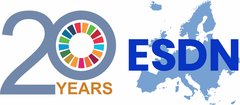INDICATIORS
Tuesday, 18 August 2020
As a management framework, the Strategy now contains 75 indicators, and targets in 41 areas. Together, they show where Germany stands on sustainable development, and provide the basis for managing the Strategy. The indicators were brought into line with the 17 SDGs and given a more international outlook when the new version of the Sustainable Development Strategy was published at the start of 2017. Thirteen additional topic areas and 30 indicators were newly added. They represent issues of particular relevance to Germany when implementing the 2030 Agenda. Each SDG is assigned at least one indicator.
Key indicators
The selected indicators should be regarded as key indicators: They denote a particularly important topic or outstanding activity connected with an SDG. Some of them also serve as gateways to more comprehensive indicator systems and statistics that already exist. Examples here include the GSDS indicators for poverty and inequality, biodiversity, and crime statistics. This further information frequently provides an insight into the extent to which different social groups are affected, which economic sectors contribute to developments or how conditions are spread geographically across Germany. For each SDG, at least one indicator-backed political target is listed which identifies relevant need for action in the area in question, although it does not aim to describe that action in detail.
Importance of the target and indicator system:
The target and indicator system is an important part of the Strategy’s management system. However, it is not the only instrument for assessing the Strategy and its implementation. On the one hand, not all areas that are relevant for sustainable development can be shown, and on the other, not all measures can be taken into account.
Feedback and assessments of the Council for Sustainable Development, the Parliamentary Advisory Council on Sustainable Development and other social stakeholders are also relevant when measuring the success of the German Sustainable Development Strategy. The discussions are frequently focused on the indicators. However, these are just a means to an end. The targets determining the level of ambition of sustainable development and the associated measures set out in the Strategy are ultimately important for the political debate. The number of sustainability indicators in the Strategy is deliberately limited in order to facilitate an overview of the state of sustainable development achieved with as little data as possible and thereby create a sustainability policy compass that remains manageable. The following indicators have been added to the GSDS in 2021:
• Global pandemic prevention (indicator 3.3)
• Women in management positions in the federal civil service (indicator 5.1.c)
• Proportion of fathers receiving parental allowance (indicator 5.1.d)
• Rollout of broadband (indicator 9.1.b)
• Cultural heritage (improving access to cultural heritage) (indicator 11.4)
• Soil protection world-wide (indicator 15.3.b)
